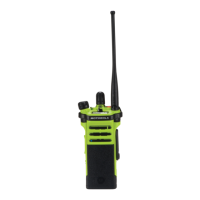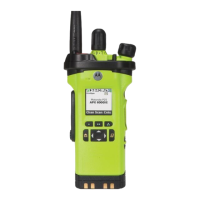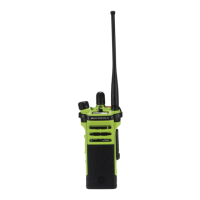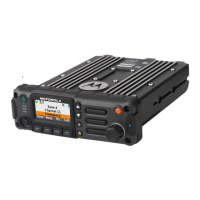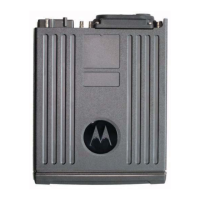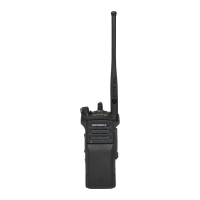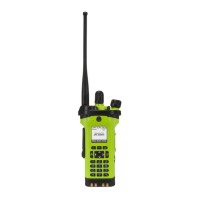Chapter 3 Theory of Operation
This chapter provides a detailed circuit description of the ASTRO APX 5000/ APX 6000/
APX 6000XE/ SRX 2200 transceiver and VOCON boards. When reading the theory of operation,
refer to the appropriate schematic and component location diagrams located in the back of this
manual. This detailed theory of operation can help isolate the problem to a particular component.
The ASTRO APX 5000/ APX 6000/ APX 6000XE radio, which is a single-band synthesized radio, is
available in the VHF (136–174 MHz), 7/800 (764–870 MHz), UHF1 (380–470 MHz) and
UHF2 (450–520 MHz) frequency bands. The ASTRO SRX 2200 radio is available in the
VHF (136–174 MHz) and UHF1 (380–470 MHz) frequency bands. The UHF1 band SRX 2200 is
available with a low power setting that limits the transmit power to 0.25 watt.
All ASTRO APX 5000/ APX 6000/ APX 6000XE/ SRX 2200 radios are capable of both analog
operation (12.5 kHz or 25 kHz bandwidths), ASTRO mode operation (12.5 kHz digital only), and
X2-TDMA mode (25 kHz only).
The ASTRO APX 5000/ APX 6000/ APX 6000XE/ SRX 2200 radio (Figure 3-1) consists of the
following:
• VOCON Board – contains a dual-core processor which includes both the microcontroller unit
(MCU) and a digital signal processor (DSP) core, the processor's memory devices, an audio
and power supply support integrated circuit (IC), a digital support IC, and an external audio
power amplifier.
• Transceiver (XCVR) Board – contains all transmit, receive, and frequency generation circuitry,
including the digital receiver back-end IC and the reference oscillator.
• Expansion Board
- Standard – contains the internal audio power amplifier circuitry and a Type III secure IC.
- Full-Feature – contains the internal audio power amplifier circuitry, a combination Global
Positioning System (GPS)/Bluetooth 2.1 IC and support circuitry, a 3-axes digital
accelerometer, an e-MMC NAND flash, and a Type III secure IC.
• Top Display – 112 pixels x 32 pixels, transflective monochrome liquid crystal display (LCD).
• Control Top – contains five switches: On/Off & Volume Knob, a 16 position Channel/Frequency
Knob with concentric 2 position switch (for Secure Enable/Disable operation), a 3 position
toggle switch for Zone Selection, and a push button switch used for Emergency calling. The
control top also includes a TX/RX LED that is solid amber upon receive, red on PTT, and blinks
amber on secure TX/RX.
• Front Display (Dual-Display Version only) – 130 pixels x 130 pixels, transflective color LCD.
• Keypad (Dual-Display Version Only) – Limited keypad version has a 3 x 2 Menu keypad with
a 4-way navigation button; Full keypad version also has a 3 x 4 alphanumeric keypad.
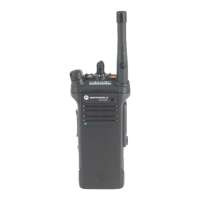
